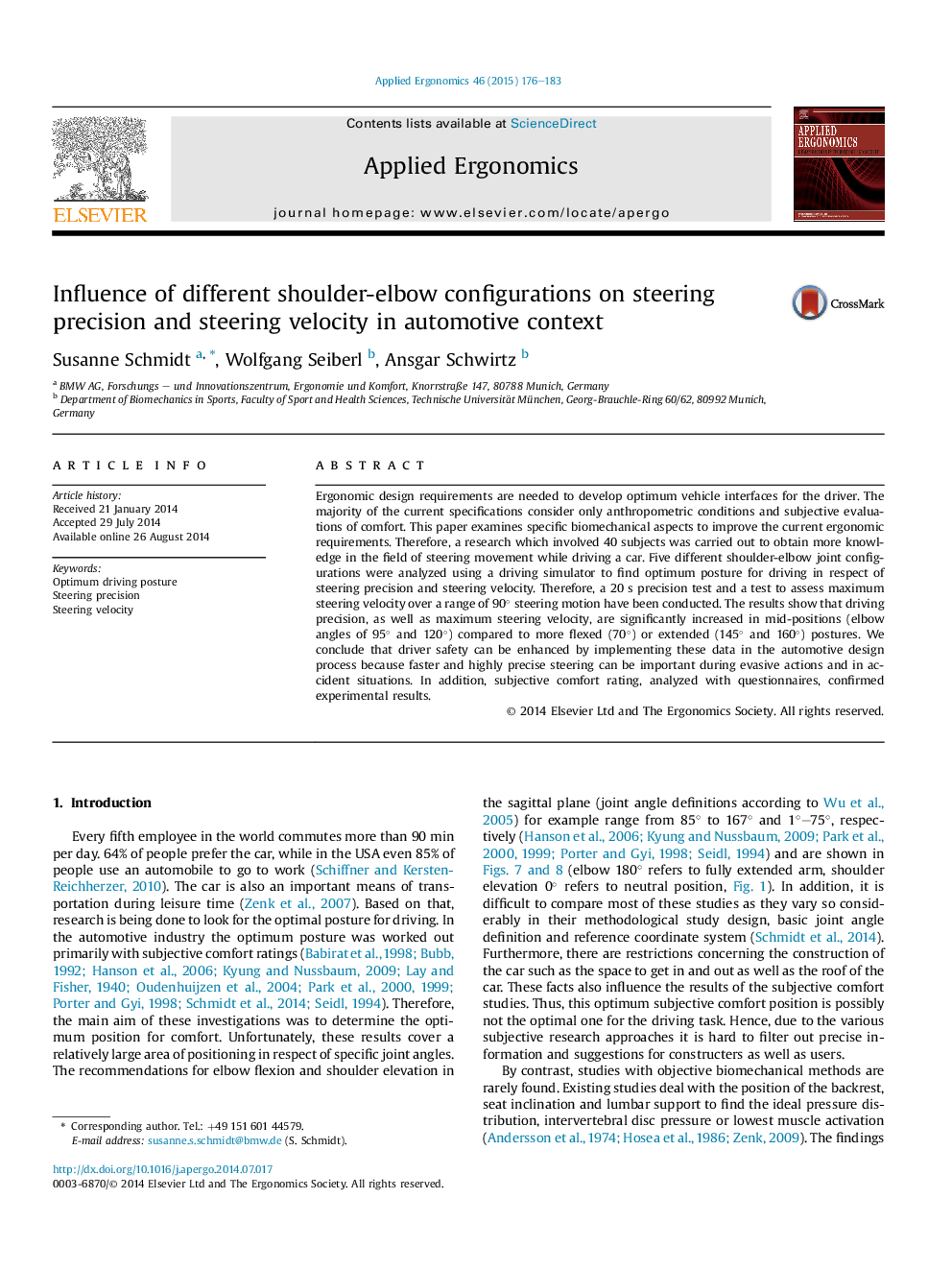| Article ID | Journal | Published Year | Pages | File Type |
|---|---|---|---|---|
| 550104 | Applied Ergonomics | 2015 | 8 Pages |
•Influence of posture on driving precision and steering velocity was investigated.•Arm posture influences steering precision and steering velocity.•Steering precision and velocity are significantly increased in mid-positions.•Driver safety can be enhanced by implementing these data in the design process.•Subjective comfort rating confirmed experimental results.
Ergonomic design requirements are needed to develop optimum vehicle interfaces for the driver. The majority of the current specifications consider only anthropometric conditions and subjective evaluations of comfort. This paper examines specific biomechanical aspects to improve the current ergonomic requirements. Therefore, a research which involved 40 subjects was carried out to obtain more knowledge in the field of steering movement while driving a car. Five different shoulder-elbow joint configurations were analyzed using a driving simulator to find optimum posture for driving in respect of steering precision and steering velocity. Therefore, a 20 s precision test and a test to assess maximum steering velocity over a range of 90° steering motion have been conducted. The results show that driving precision, as well as maximum steering velocity, are significantly increased in mid-positions (elbow angles of 95° and 120°) compared to more flexed (70°) or extended (145° and 160°) postures. We conclude that driver safety can be enhanced by implementing these data in the automotive design process because faster and highly precise steering can be important during evasive actions and in accident situations. In addition, subjective comfort rating, analyzed with questionnaires, confirmed experimental results.
